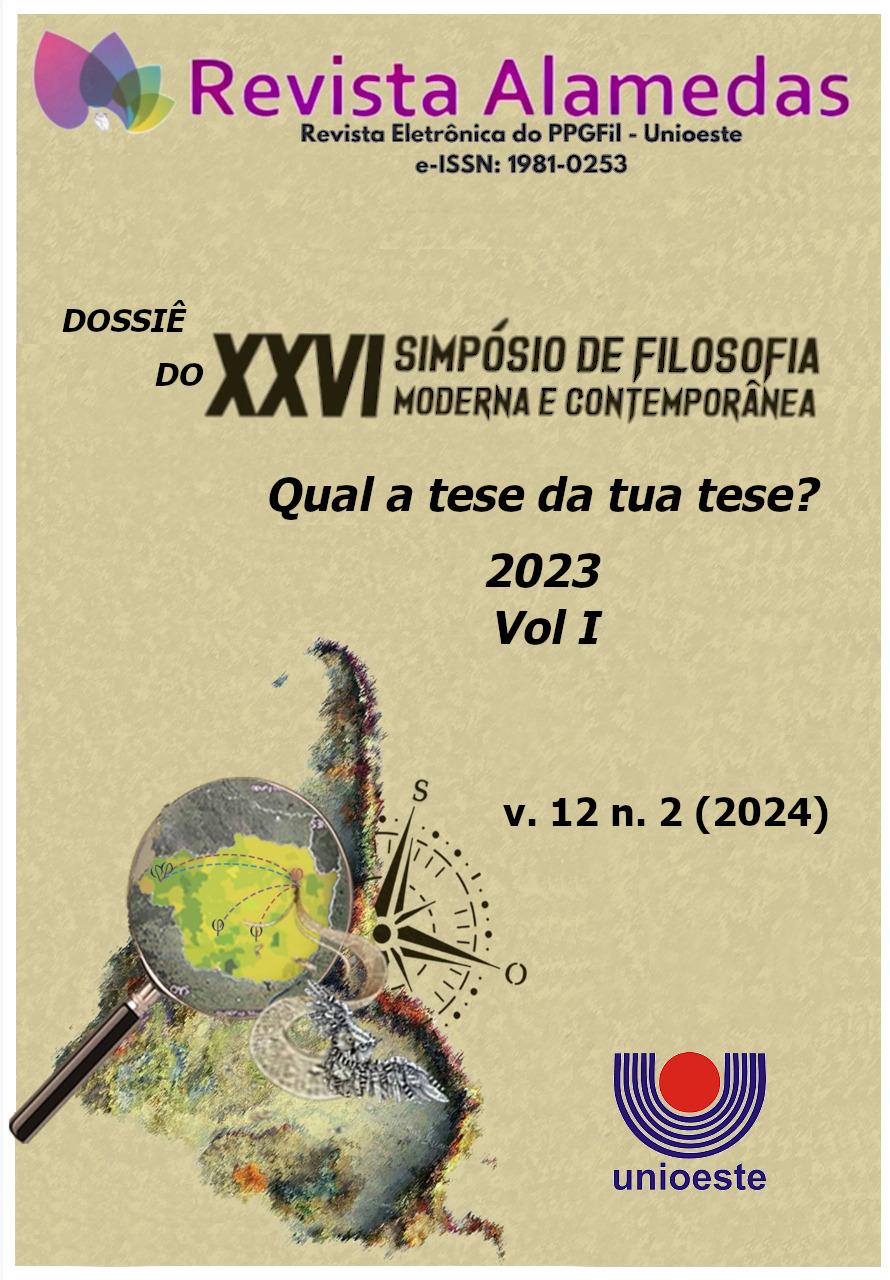"O que quer uma mulher?"
uma experiência parrhesiásta em torno dos enigmas da feminilidade
DOI:
https://doi.org/10.48075/ra.v12i2.33136Keywords:
Feminilidade, Foucault, Gozo, Parrhesía, Psicanálise freudo-lacanianaAbstract
In response to the question “After all, what is the thesis of your Thesis?” This thesis states that parrhesia opposes submission and psychological suffering, enabling the invention and expression of femininity, whether through the spoken or written word. Therefore, it studies the concept of parrhesia related to women, through the practices of speaking openly about oneself that are operated in the construction of femininity. Its main bibliographical references are the last three courses developed by Foucault and psychoanalytic texts from Freud to Lacan. Its objective is to discuss the enigmas of femininity based on the question posed by the psychoanalytic clinic “What does a woman want?” in its articulation with the concept of parrhesia elucidated by Foucault. The literary narrative Antigone, a play by Sophocles, was chosen; The Dora Case, text in which Freud clinically relates the story of Ida Bauer; references to Sappho of Lesbos, Aspasia of Miletus, Hildegard of Bingen, Christine of Pisan, Mary Wollstonecraft, Marie-Olympe of Gouges; Lou Andreas-Salomé, Gabriela Mistral and the Brazilian Nísia Floresta, Parrhesiást women who distrusted the solidity of classical, patriarchal, strongly exclusionary theoretical formulations, irreverently betting on tangential paths. In the end, the Thesis discusses supplementary enjoyment as characteristic of female sexuality, supporting a position of openness to the woman's 'want', manifested in action through parrhesia.Downloads
Published
How to Cite
Issue
Section
License
Copyright (c) 2024 Alamedas

This work is licensed under a Creative Commons Attribution-NonCommercial-ShareAlike 4.0 International License.
Aviso de Direito Autoral Creative Commons
Política para Periódicos de Acesso Livre
Autores que publicam nesta revista concordam com os seguintes termos:
1. Autores mantém os direitos autorais e concedem à revista o direito de primeira publicação, com o trabalho simultaneamente licenciado sob a Licença Creative Commons Attribution que permite o compartilhamento do trabalho com reconhecimento da autoria e publicação inicial nesta revista.2. Autores têm autorização para assumir contratos adicionais separadamente, para distribuição não-exclusiva da versão do trabalho publicada nesta revista (ex.: publicar em repositório institucional ou como capítulo de livro), com reconhecimento de autoria e publicação inicial nesta revista.
3. Autores têm permissão e são estimulados a publicar e distribuir seu trabalho online (ex.: em repositórios institucionais ou na sua página pessoal) a qualquer ponto antes ou durante o processo editorial, já que isso pode gerar alterações produtivas, bem como aumentar o impacto e a citação do trabalho publicado (Veja O Efeito do Acesso Livre).
Licença Creative Commons
Esta obra está licenciada com uma Licença Creative Commons Atribuição-NãoComercial-CompartilhaIgual 4.0 Internacional, o que permite compartilhar, copiar, distribuir, exibir, reproduzir, a totalidade ou partes desde que não tenha objetivo comercial e sejam citados os autores e a fonte.


